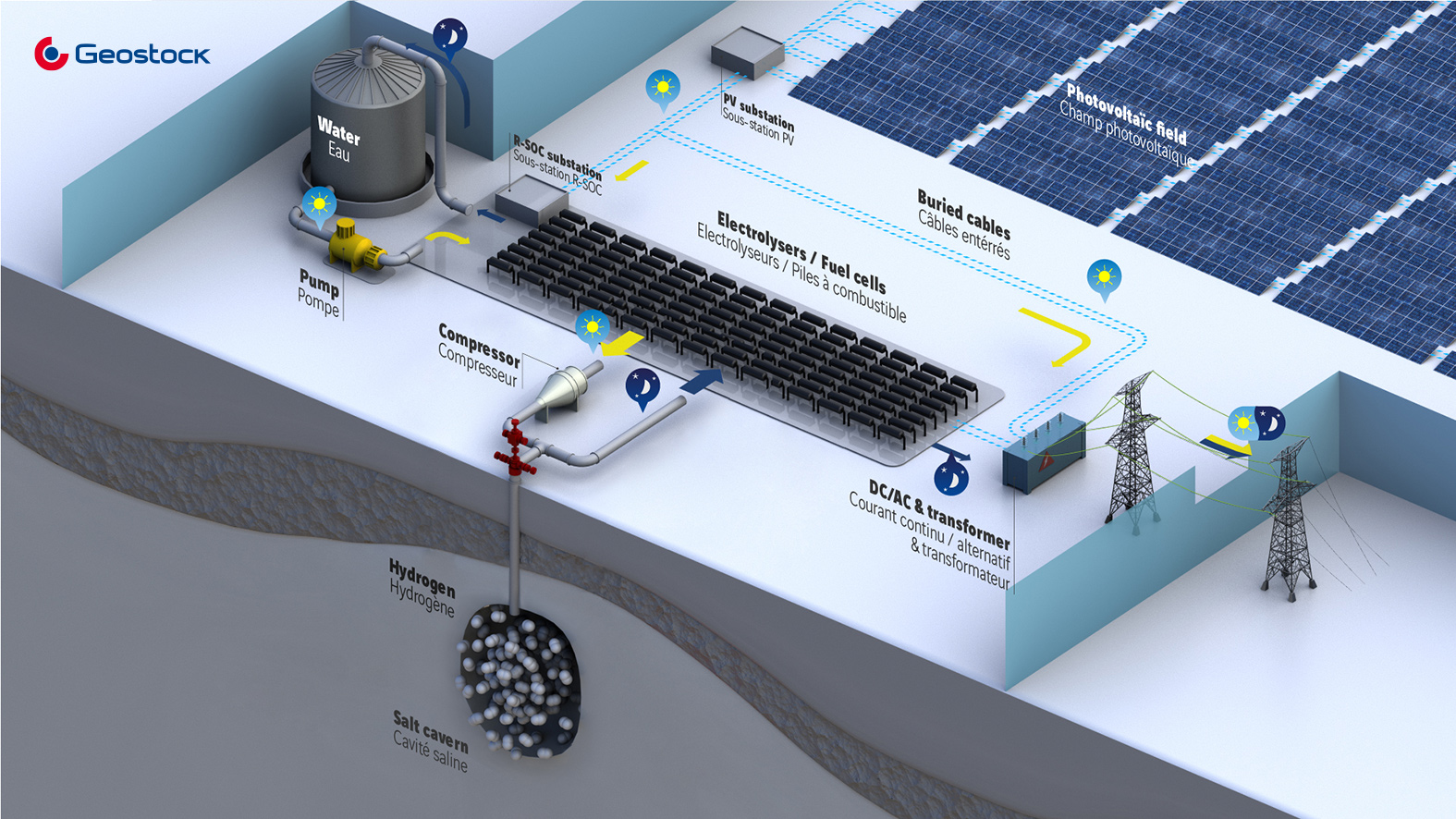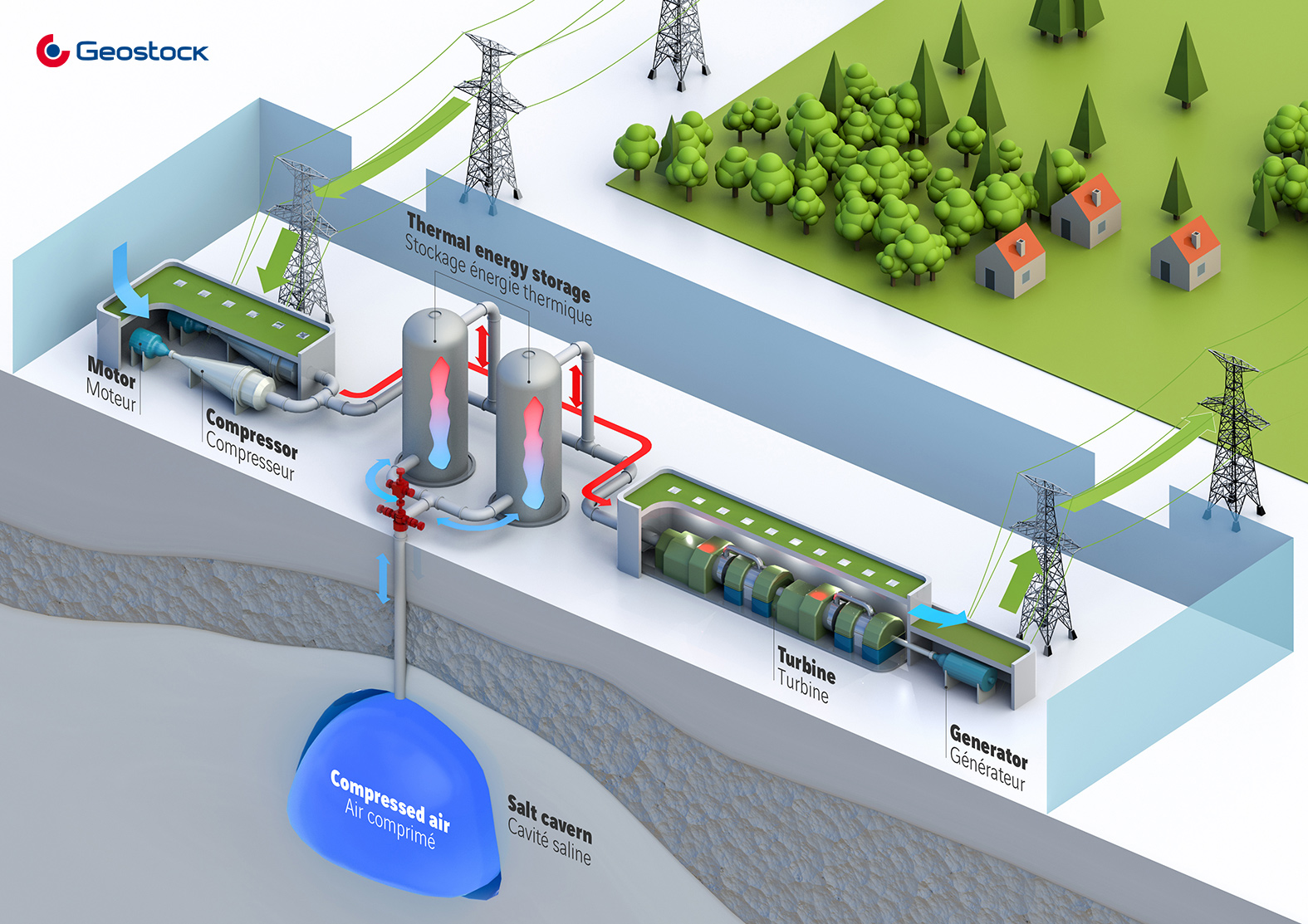
Carbon-free energy storage is set to naturally play an increasing role in the energy transformation, contribute to the integration of intermittent renewable energies into energy networks, and reduce greenhouse gas emissions.
The solutions developed and proposed by Geostock for several decades, whether in salt caverns, porous media (aquifers and depleted fields) or in mined caverns, are particularly well adapted to the storage of carbon-free energy:
Hydrogen gas and compressed air storage in salt caverns have been used for several years in commercial applications.
The underground storage of hydrogen can have several applications. Hydrogen can be stored for the purpose of returning electricity to the grid (power-to-power) or for the use of the hydrogen molecule for mobility or for industrial use as a substitute for fossil fuel.
Initially, hydrogen is stored in gaseous form. Hydrogen gas can be stored in a salt cavern, which is a mature technology. But it can also be stored in a porous medium (aquifer or depleted field) or in a lined mined cavern – technologies that are still under technical development or being demonstrated.

Geostock is also working on solutions for storing hydrogen in ammonia or liquefied form.
Massive storage of compressed-air (CAES) in salt caverns is a competitive technology that can provide services to the power grid, including the integration of intermittent energies and peak consumption period demand. This solution can also be considered in mined caverns and porous media.
Compressed air can be stored either adiabatically (AA-CAES), by recovering and storing heat from air compression and releasing it when the air expands, or isothermally (I-CAES), without heat recovery. In the latter case, an energy source (natural gas or hydrogen) is required to heat the air as it expands to produce electricity.

Geostock develops innovative solutions for the underground storage of other carbon-free energies, such as high-capacity redox-flow batteries using salt caverns or mined caverns, underground pumped storage power stations and heat storage. These developments are made through internal R&D, as well as through participation in national and international collaborative research projects.
With almost 60 years of experience in the underground storage of hydrocarbons and more than 10 years of R&D and design studies on the storage of hydrogen and compressed air, Geostock is perfectly able to offer solutions to industrial companies seeking to actively contribute to the energy transition and with massive storage needs of carbon-free energy.